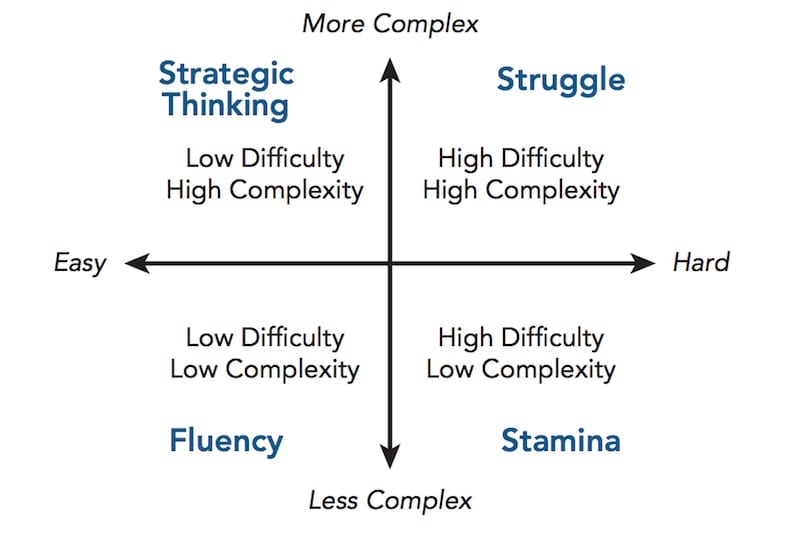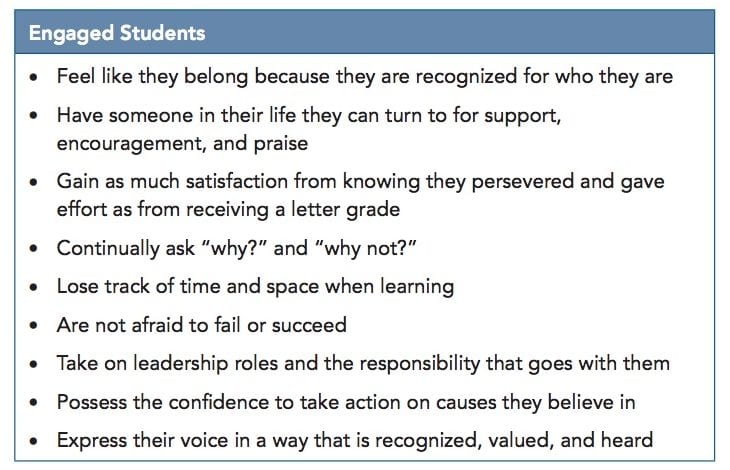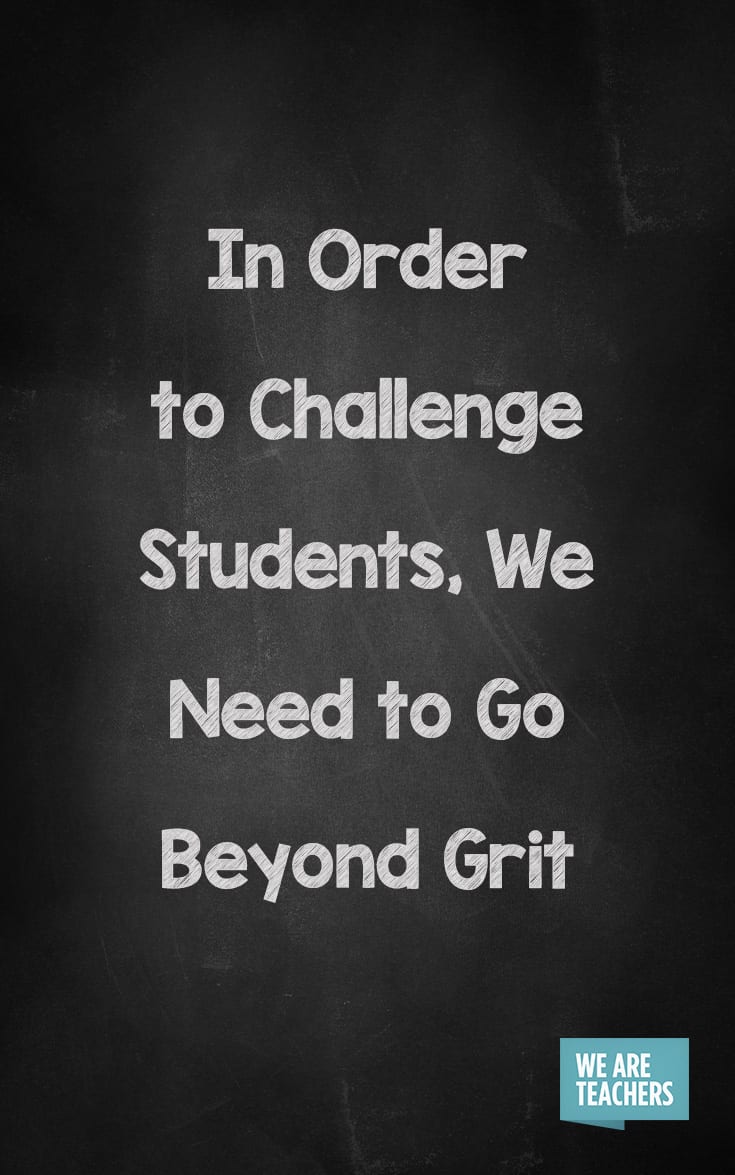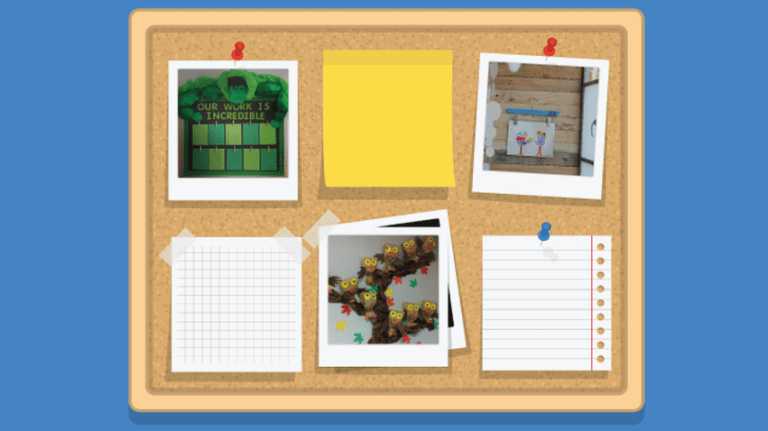Over the last decade, there’s been lots of talk about the way we challenge students. “Grit” and the ability to persist in the face of challenge has become a prominent element of classroom instruction. Popularization of Webb’s Depth of Knowledge made many of us look anew at task demands. Layer on the development of newer, more rigorous standards of learning, and now you’ve got everyone’s attention. (Watch the Facebook Live event on this topic here.)
Too bad many of the popular notions about challenging students are just plain wrong. In this post, we hope to clarify some of the nuanced findings about challenge and its relationship to learning. In doing so, we offer a framework for using challenge as an essential element for engaging kids.
True engagement meets three conditions.
The notion of engagement is one that vexes all of us. Is it keeping students entertained? Appealing to their interests? Is it all about observing outward behavioral signs, like making eye contact and leaning forward in their seats? Too often, student engagement is reduced to a bag of tricks to keep them paying attention.
We argue that engagement occurs when three conditions are present: 1) positive student-teacher relationships; 2) clarity in instruction; and 3) challenge. Students are more willing and able to take on challenging tasks when they have strong positive relations with a teacher. The challenge is further understood when the teacher is clear about the learning intentions and success criteria. But it is the last condition—challenge—that can be problematic, as it is often confused with difficulty.
The goal is not difficulty, it’s complexity.
We think of difficulty as a measure of the amount of effort, work, or time required for a task whereas complexity is the as the type of thinking, the number of steps, or the necessary background knowledge required of the task. There are any number of tasks that are difficult, but not necessarily complex. Memorizing a long string of unrelated numbers might be difficult, but it never gets more complex. It’s still recall and reproduction. Answering 10 math problems or 50 won’t ever get more complex if they are similar to one another—it just takes more time.
Now consider difficulty and complexity as two axes. Difficulty is on the horizontal, from easy to hard. Complexity is on the vertical axis, from less complex to more complex (see figure below). We’ve now created four possible conditions. Each one serves a purpose, but knowing what your learning intentions are is vital in creating challenge. Below the difficulty axis are two types of tasks: the first is fluency building, while the second is stamina building. Generally speaking, these are tasks that can be done independently. Above the difficulty axis are another two task types: strategic thinking and struggle to build expertise. Unlike those that can be accomplished independently, these last two task types are accomplished with peers and the teacher. Each of these task types should be regularly encountered by students.

Four task types that are essential to challenge students:
1) Fluency
Fluency, or as researchers say automaticity, is essential for learning. Mastery of sight words, math facts, writing while maintaining voice, and such open up cognitive spaces that allow for more complex thinking to occur. These are low difficulty/low complexity tasks that students are well on their way to mastering. However, fluency isn’t reserved for young children. The concepts and skills we teach should eventually move to a student’s fluent range of recall. For example, high school students should be able to fluently describe the political and social context of the American Revolutionary period. Doing so allows them to engage in more complex analysis of patterns of political revolution in history.
2) Stamina
Students need experiences that stretch the range of their stamina, perseverance, and grit. Reading for longer periods of time, studying for an upcoming test, writing a research paper, and so on are ways in which stamina contributes to learning. These tasks are more difficult, as they require more effort, but are still relatively less complex. Therefore, there’s lots of self-regulation that is necessary. Regular experiences with stamina building activities help children discover their growing capacity to persist.
3) Strategic thinking
The third task type often involves interaction with peers and the teacher. These are largely tasks that require metacognitive thinking, such as setting goals, making a plan, and making adjustments based on progress. In the early stages of an investigation on a topic, student teams make decisions about how they will approach the task, what internal timelines they will create for themselves, and how they will use a rubric or checklist to make sure they are fulfilling the project’s requirements. Because this is a more complex task, input and guidance from the teacher are critical for their success.
4) Struggle for expertise
These tasks are highly difficult and highly complex, and draw on students’ fluency, stamina, and strategic thinking. Because they are highly demanding, the teacher is front and center. Close and critical reading of a complex text is one example of a task designed to provoke struggle. The teacher is asking text-dependent questions that move students through four stages of thinking (Frey & Fisher, 2013):
- What does the text say? (Literal level of meaning)
- How does the text work? (Structural level of meaning)
- What does the text mean? (Inferential level of meaning)
- What does the text inspire you to do? (Interpretive level of meaning)
Students confronted with this demanding text type are reading and discussing complex text with peers, and are facilitated by their teacher. At the interpretive level, students are further extending their critical analysis through writing, debates, or Socratic seminars.
Getting challenge just right
Learners need to regularly experience each of these task conditions. Learning happens in the stretch toward a new goal. If the challenge is too great, rather than provoking struggle we cause them to give up. If the challenge is nonexistent, we create boredom and they tune out. But when we couple challenge with positive relationships and clarity, we create the conditions necessary for learning. That’s engagement by design.




